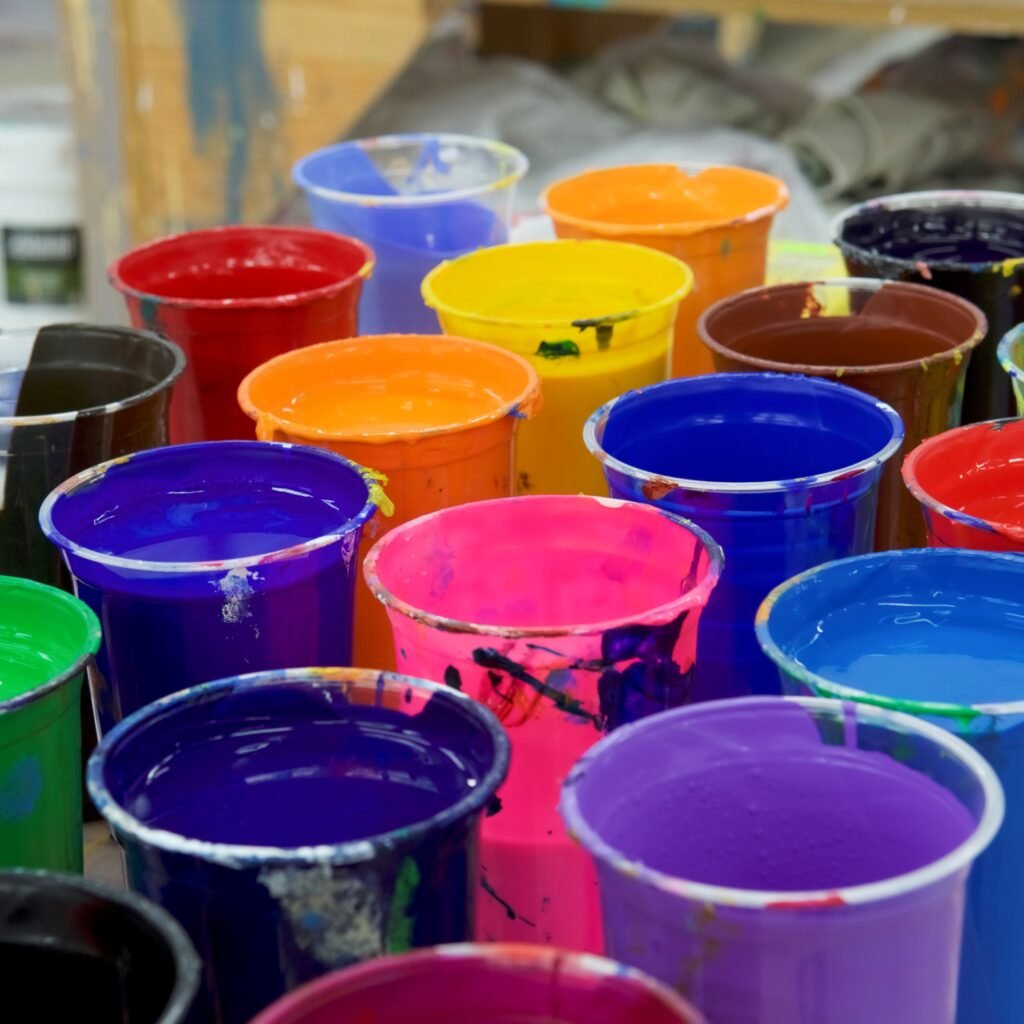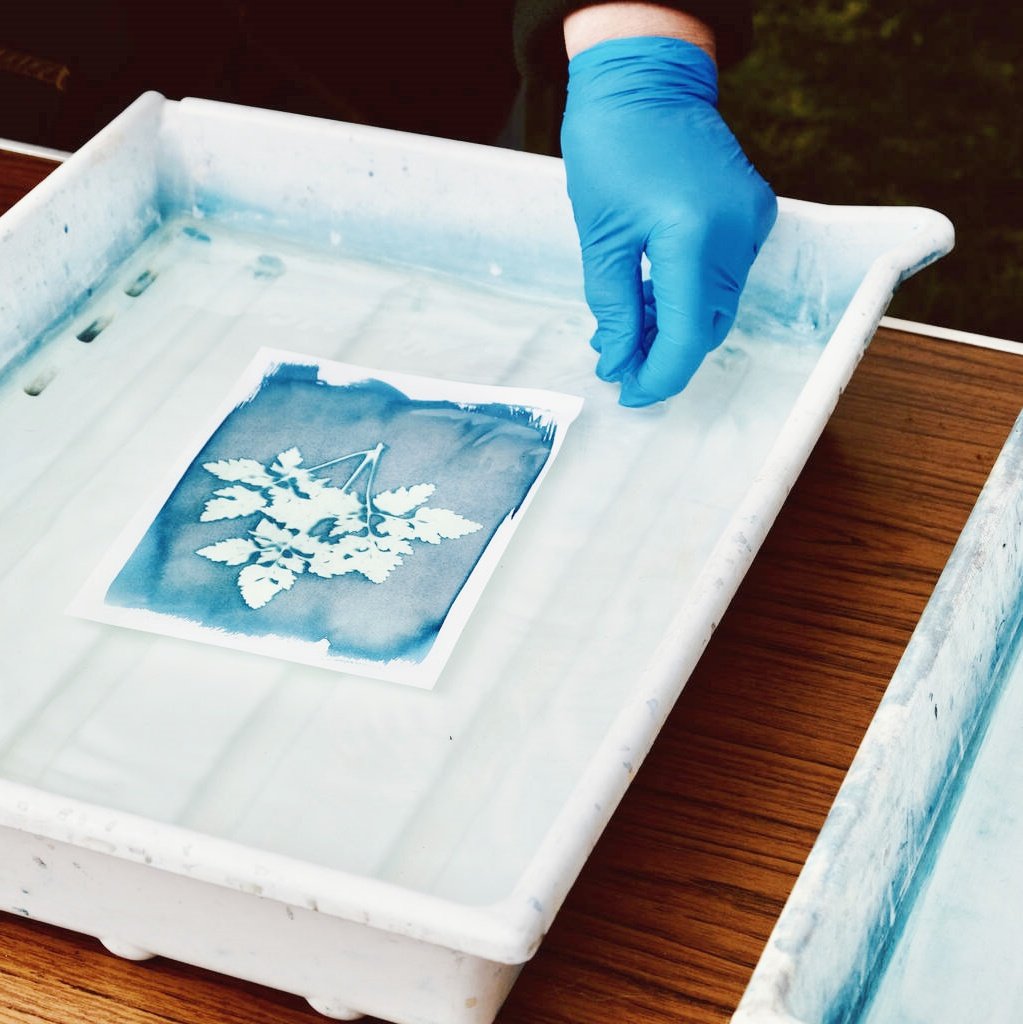The Advantages & Disadvantages of Plastisol Ink
Plastisol print techniques have been a staple in the screen printing industry for decades. Widely used for printing on fabrics like t-shirts, hoodies, and tote bags, plastisol ink offers a range of benefits, but there are also some drawbacks to consider. This article will explore the pros and cons of using plastisol ink for screen printing, while also highlighting key considerations for artists working with Gold Silkscreen Ink and Silkscreen Ink for Fabric.
What is Plastisol Ink?
Plastisol ink is a PVC-based system widely used in the screen printing industry. Unlike water-based inks, plastisol is a 100% solid ink system, meaning it doesn’t evaporate or dry out in the screen. Instead, plastisol print methods require heat to cure the ink, allowing it to bond with the fabric.
This curing process typically occurs between 149°C and 166°C (300°F to 330°F), ensuring the ink solidifies and becomes durable enough for long-lasting prints. The thermoplastic nature of plastisol ink allows it to re-melt when exposed to heat, making it a versatile but also potentially tricky material to work with.
Key Advantages of Plastisol Print
Long-Lasting Durability
One of the most notable benefits of using plastisol print techniques is the durability of the ink. When properly cured, plastisol ink adheres to fabric in a way that resists cracking and fading, even after multiple washes. This makes it a popular choice for items like t-shirts and tote bags that need to withstand frequent use.
Easy to Work With
For artists and screen printers, plastisol print methods are considered user-friendly. The ink does not dry out in the screen, allowing for extended working periods without worrying about clogging or drying issues. Plastisol ink is ready to use straight out of the container, which means less preparation time and higher productivity.
Versatility Across Fabrics
Another advantage of plastisol ink is its versatility. Whether you’re printing on light or dark fabrics, the ink can be customized to fit the project. Many printers combine Gold Silkscreen Ink or Silkscreen Ink for Fabric with plastisol ink to achieve unique, eye-catching designs. For instance, Gold Silkscreen Ink adds a luxurious touch when used alongside plastisol print for high-contrast designs on black or dark-colored garments.
Wet-on-Wet Printing
With plastisol print, you can print wet-on-wet, which increases production speed and efficiency. This is especially useful in mass production scenarios where time is a critical factor. Multiple layers of plastisol ink can be applied without needing to wait for previous layers to dry, making the process faster and more cost-effective.
Disadvantages of Plastisol Ink
Heavy “Hand” Feel
One drawback of using plastisol print techniques is the heavy “hand” feel of the ink. This refers to how noticeable the ink feels when touched. Plastisol ink can create a thick layer on the fabric, especially when printed in opaque colors or multiple layers. While this can be minimized by adjusting the ink opacity, it remains a concern for consumers who prefer a softer finish.
Heat Sensitivity
As a thermoplastic, plastisol ink remelts when exposed to high temperatures. This means plastisol prints should not be ironed directly, as the ink can smear or distort. The heat sensitivity of the ink can be problematic in environments where high temperatures are common, especially during the transportation of printed goods.
Environmental Considerations
The production and disposal of plastisol ink have environmental impacts. Plastisol contains PVC, which can release harmful chemicals when not disposed of correctly. While many municipalities do not classify cured plastisol ink as hazardous waste, the cleaning process often involves solvents that can harm the environment if not properly managed. Fortunately, modern filtration systems can capture ink residues, and eco-friendly solvent alternatives are available for cleaning screens and tools.
Best Practices for Working with Plastisol Ink
Keeping the Ink Clean
A crucial aspect of managing plastisol ink is maintaining its cleanliness. Contaminants like dust, lint, and other colors can degrade the quality of your print. By keeping your workspace clean and avoiding cross-contamination, you can extend the lifespan of your plastisol print materials.
When inks become contaminated, consider collecting them for blending or re-purposing. For instance, waste plastisol ink can often be over-pigmented to create darker colors for less critical jobs, reducing waste and cost.
Heat Curing for Longevity
Proper heat curing is critical to ensuring your plastisol print lasts. Without proper curing, the ink will crack, peel, or fade over time. To avoid these issues, always use a heat press or dryer set to the recommended temperature for the specific plastisol ink you are using. A general rule is to cure at around 160°C (320°F) for at least one minute, though exact times and temperatures will vary by ink brand and fabric type.
Applications of Plastisol Ink in Screen Printing
Custom Apparel and Merchandise
Plastisol ink is most commonly used in printing custom apparel, including t-shirts, sweatshirts, and jackets. Its durability and ease of use make it an ideal choice for high-volume production runs. Using Gold Silkscreen Ink alongside plastisol print techniques can add a premium finish to custom designs, particularly for fashion lines or luxury merchandise.
Printing on Dark Fabrics
When it comes to dark fabrics, plastisol ink is highly effective. Unlike water-based inks that may struggle to show up on darker materials, plastisol print methods offer vibrant, opaque colors that stand out. This is especially true for Gold Silkscreen Ink, which shines against dark backgrounds, making it a go-to for eye-catching designs.
Specialty Prints
For artists looking to create specialty prints, plastisol print techniques allow for a variety of effects, including puff prints, glitter effects, and even glow-in-the-dark designs. By combining screen printing plastisol ink with different additives, printers can create texture and dimension in their designs, giving each piece a unique touch.
Comparing Plastisol Ink to Other Screen Printing Inks
Plastisol vs. Water-Based Inks
One of the most common comparisons in screen printing is between plastisol ink and water-based inks. While water-based inks offer a softer finish and are more eco-friendly, they can be difficult to work with on darker fabrics. Plastisol print techniques, on the other hand, provide more vibrant colors, better opacity, and are generally easier to use for beginners.
Plastisol vs. Discharge Inks
Discharge inks are another alternative to plastisol ink, often used for achieving soft prints on dark fabrics. However, discharge inks rely on removing dye from the fabric and can be inconsistent in results. In contrast, plastisol print methods ensure more predictable outcomes with greater flexibility for specialty effects, including metallic finishes like Gold Silkscreen Ink.
Final Thoughts on Plastisol Print
Despite some disadvantages, plastisol print remains one of the most popular techniques in the screen printing industry due to its versatility, durability, and ease of use. For artists and printers, especially those working with Gold Silkscreen Ink or Silkscreen Ink for Fabric, plastisol ink offers a reliable solution for creating long-lasting, vibrant designs.
By understanding both the advantages and limitations of plastisol print, you can make informed decisions for your projects, ensuring high-quality results every time.


